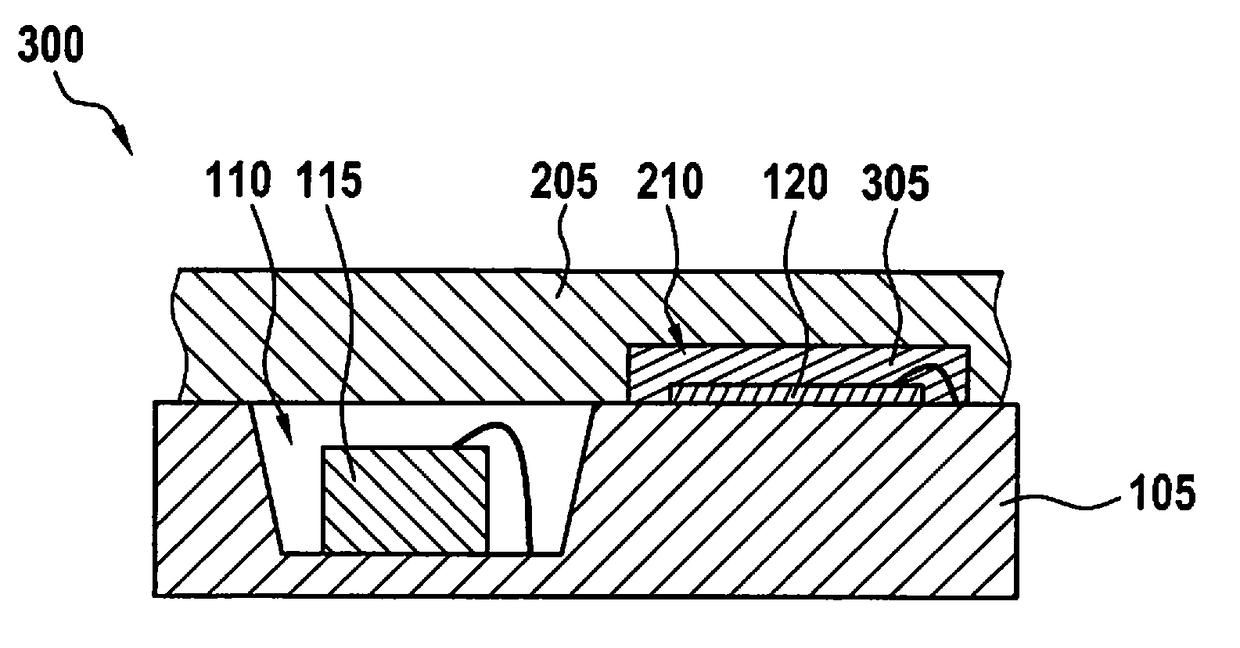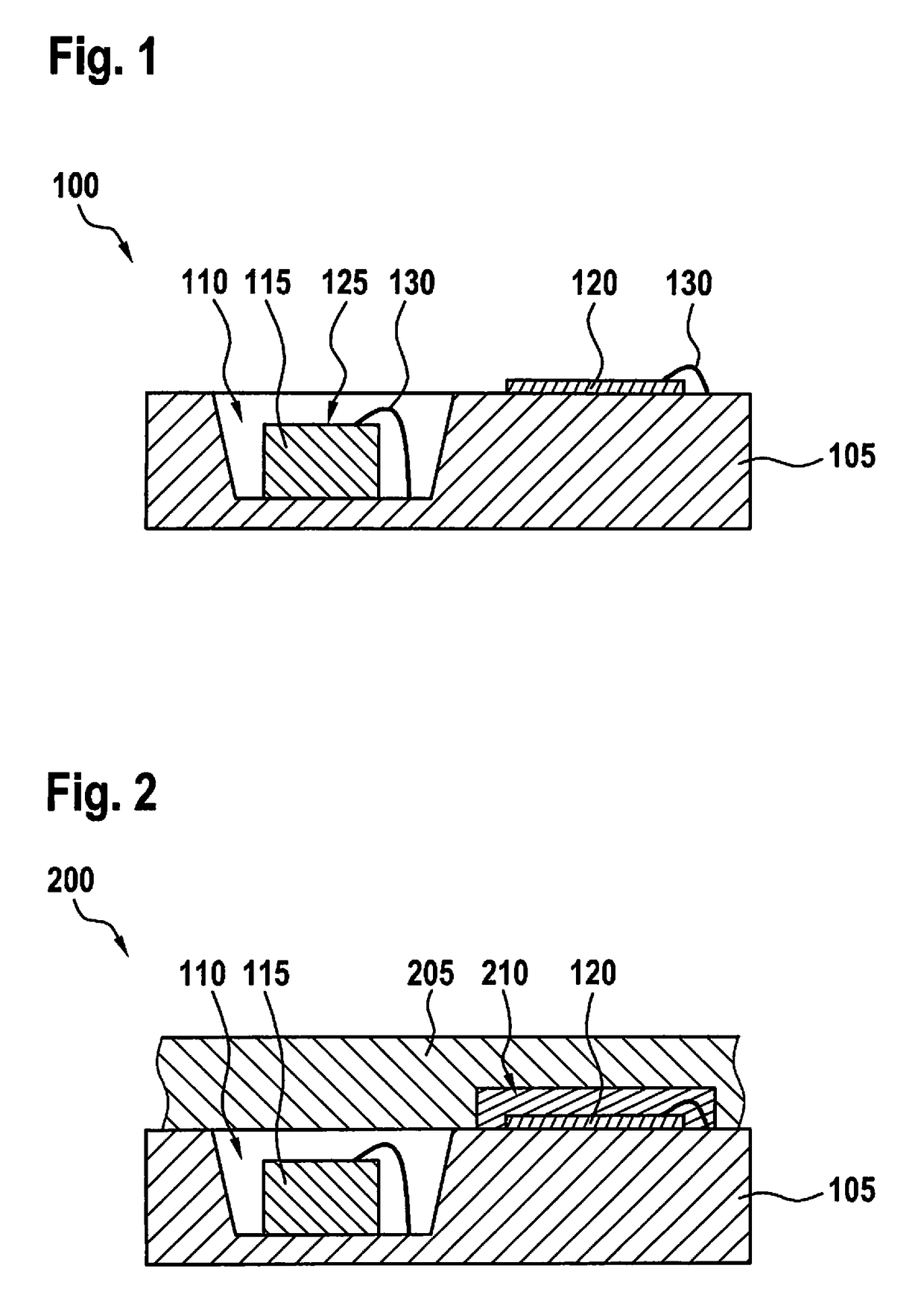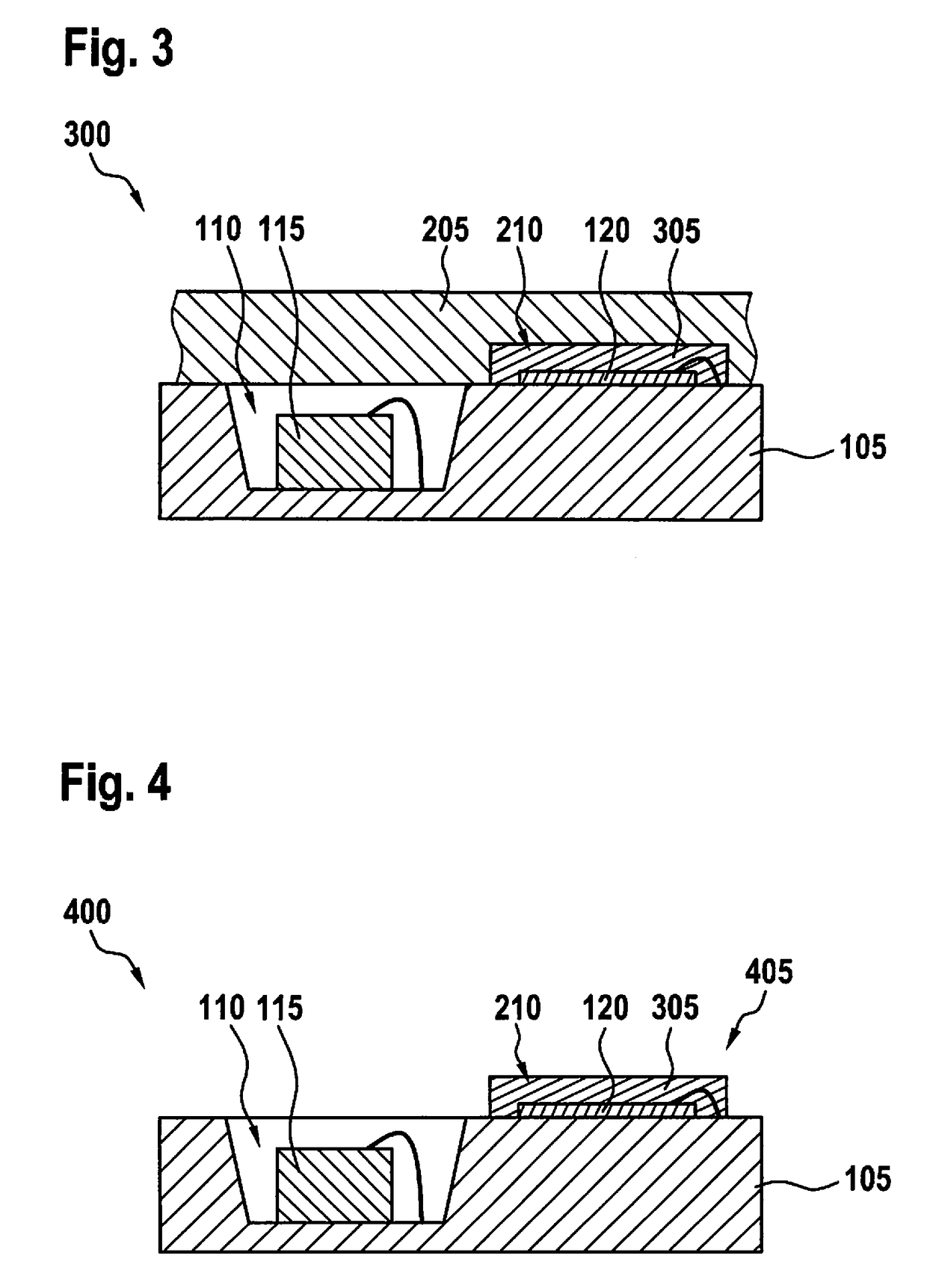Micromechanical pressure sensor
a pressure sensor and micro-mechanical technology, applied in the direction of fluid pressure measurement, instruments, coatings, etc., can solve the problems of potting die sealing, easy damage to the membrane, complicated and cost-intensive,
- Summary
- Abstract
- Description
- Claims
- Application Information
AI Technical Summary
Benefits of technology
Problems solved by technology
Method used
Image
Examples
Embodiment Construction
[0015]FIG. 1 shows a first step 100 of a method for producing a pressure sensor. A substrate 105 comprises a depression 110 which may also be called a cavity. The substrate 105 customarily comprises a semiconductor material, for example silicon. On an upper surface of the substrate 105, a micromechanical sensor element 115 is attached in the depression 110 and an evaluation circuit 120 is attached next to the depression 110. The micromechanical sensor element 115 comprises a micromechanical structure (MEMS: Microelectromechanical System) which comprises a membrane 125 which is mounted movably in relation to the rest of the sensor element 115. The evaluation circuit 120 is customarily a semiconductor circuit which is generally designed as an application-specific integrated circuit (ASIC). The sensor element 115 and the evaluation circuit 120 are customarily fastened to the membrane 125 with an adhesive bonding technique.
[0016]Electrical connections between the sensor element 115 and ...
PUM
| Property | Measurement | Unit |
|---|---|---|
| time | aaaaa | aaaaa |
| semiconductor | aaaaa | aaaaa |
| conductive | aaaaa | aaaaa |
Abstract
Description
Claims
Application Information
 Login to View More
Login to View More - R&D Engineer
- R&D Manager
- IP Professional
- Industry Leading Data Capabilities
- Powerful AI technology
- Patent DNA Extraction
Browse by: Latest US Patents, China's latest patents, Technical Efficacy Thesaurus, Application Domain, Technology Topic, Popular Technical Reports.
© 2024 PatSnap. All rights reserved.Legal|Privacy policy|Modern Slavery Act Transparency Statement|Sitemap|About US| Contact US: help@patsnap.com










